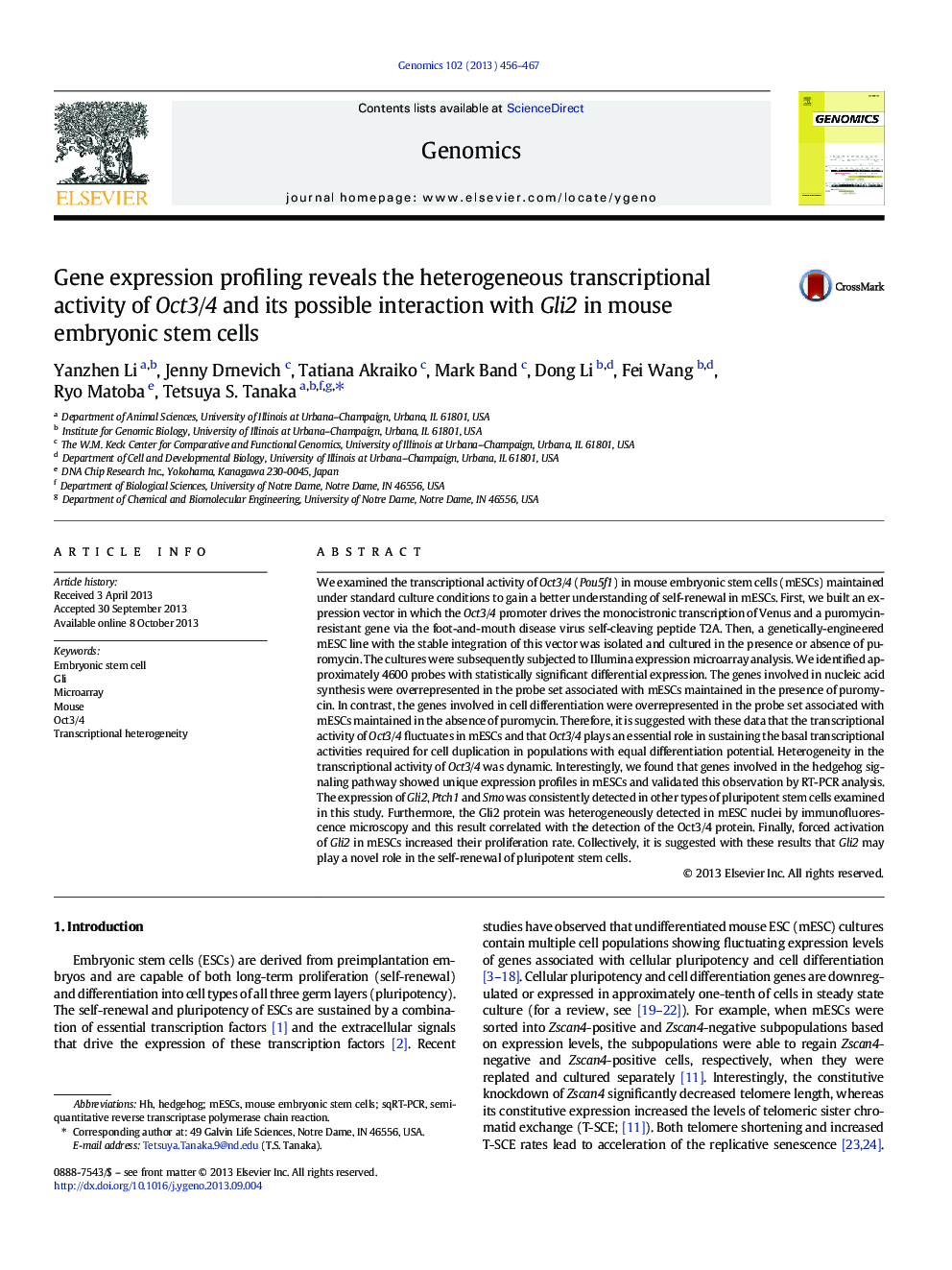| Article ID | Journal | Published Year | Pages | File Type |
|---|---|---|---|---|
| 2820828 | Genomics | 2013 | 12 Pages |
•A standard mouse embryonic stem cell culture contains Oct3/4-low cells.•Oct3/4-low cells possess expression profiles similar to differentiated cells.•Heterogeneity in the transcriptional activity of Oct3/4 is dynamic.•Gli2 expression patterns are highly correlated with Oct3/4 expression patterns.•Forced activation of Gli2 increases the proliferation rate.
We examined the transcriptional activity of Oct3/4 (Pou5f1) in mouse embryonic stem cells (mESCs) maintained under standard culture conditions to gain a better understanding of self-renewal in mESCs. First, we built an expression vector in which the Oct3/4 promoter drives the monocistronic transcription of Venus and a puromycin-resistant gene via the foot-and-mouth disease virus self-cleaving peptide T2A. Then, a genetically-engineered mESC line with the stable integration of this vector was isolated and cultured in the presence or absence of puromycin. The cultures were subsequently subjected to Illumina expression microarray analysis. We identified approximately 4600 probes with statistically significant differential expression. The genes involved in nucleic acid synthesis were overrepresented in the probe set associated with mESCs maintained in the presence of puromycin. In contrast, the genes involved in cell differentiation were overrepresented in the probe set associated with mESCs maintained in the absence of puromycin. Therefore, it is suggested with these data that the transcriptional activity of Oct3/4 fluctuates in mESCs and that Oct3/4 plays an essential role in sustaining the basal transcriptional activities required for cell duplication in populations with equal differentiation potential. Heterogeneity in the transcriptional activity of Oct3/4 was dynamic. Interestingly, we found that genes involved in the hedgehog signaling pathway showed unique expression profiles in mESCs and validated this observation by RT-PCR analysis. The expression of Gli2, Ptch1 and Smo was consistently detected in other types of pluripotent stem cells examined in this study. Furthermore, the Gli2 protein was heterogeneously detected in mESC nuclei by immunofluorescence microscopy and this result correlated with the detection of the Oct3/4 protein. Finally, forced activation of Gli2 in mESCs increased their proliferation rate. Collectively, it is suggested with these results that Gli2 may play a novel role in the self-renewal of pluripotent stem cells.
